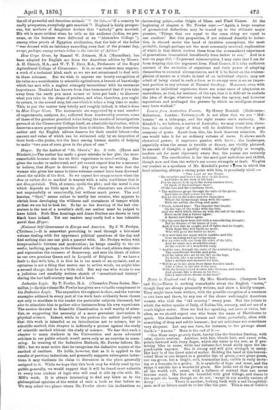How Crops Grow, by Samuel W. Johnson, MA. (Macmillan), has
been adapted for English use from the American edition by Messrs. A. H. Church, M.A.., and W. T. T. Dyer, B.A., Professors of the Royal Agricultural College of Cirencester. It is, as our readers may suppose, a work of a technical kind, such as we are not accustomed to deal with in these columns. But we wish to express our hearty recognition of its value as a contribution to scientific agriculture, a branch of knowledge which has met with a neglect strangely inconsistent with its enormous importance. Mankind has known from time hntnetnerial that if you take away from the earth you must sooner or later put back ; to discover what you take in the shape of produce, and what, therefore, you ought to return, is the second step, but one which it takes a long time to make. This, to put the matter very briefly and roughly indeed, is what is done in How Crops Grow. The statements are supported by a vast number of experiments, analyses, dec., collected from trustworthy sources, some -of those of the greatest practical value being the results of investigations pursued at the Cirencester College itself, an admirable institution, which deserves a more general appreciation than it obtains. Both the American author and tho English editors deserve for their careful labour—the amount and value of which can be estimated only by an inspection of their book—the praise, not the least among human merits, of helping to make "two ears of corn grow in the place of one."


































 Previous page
Previous page